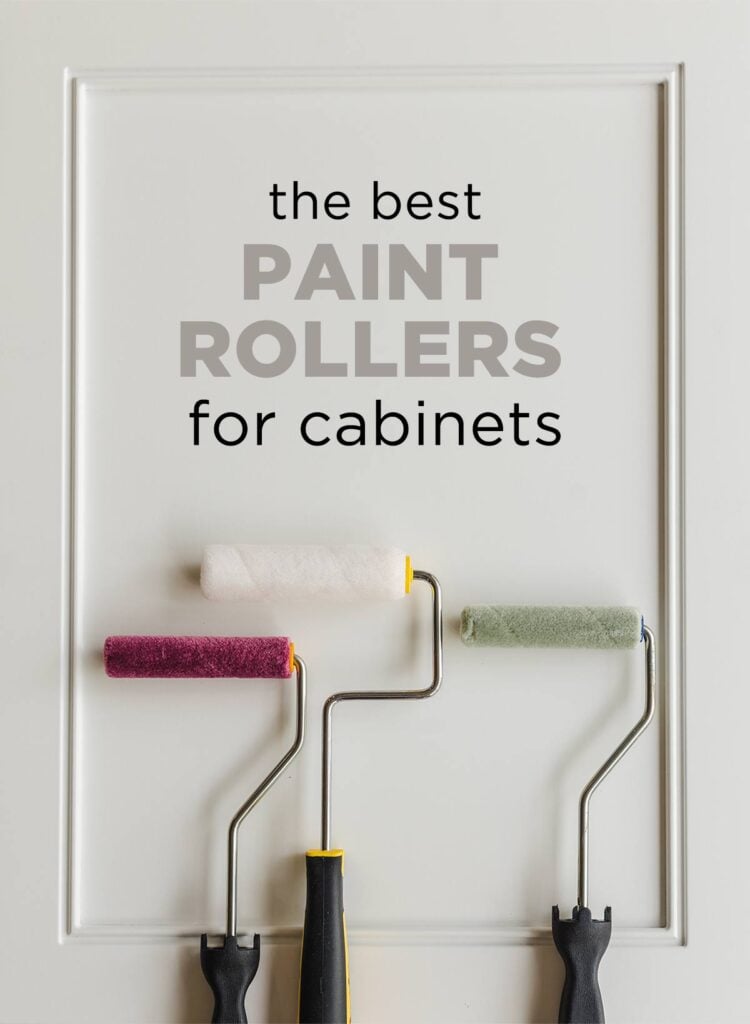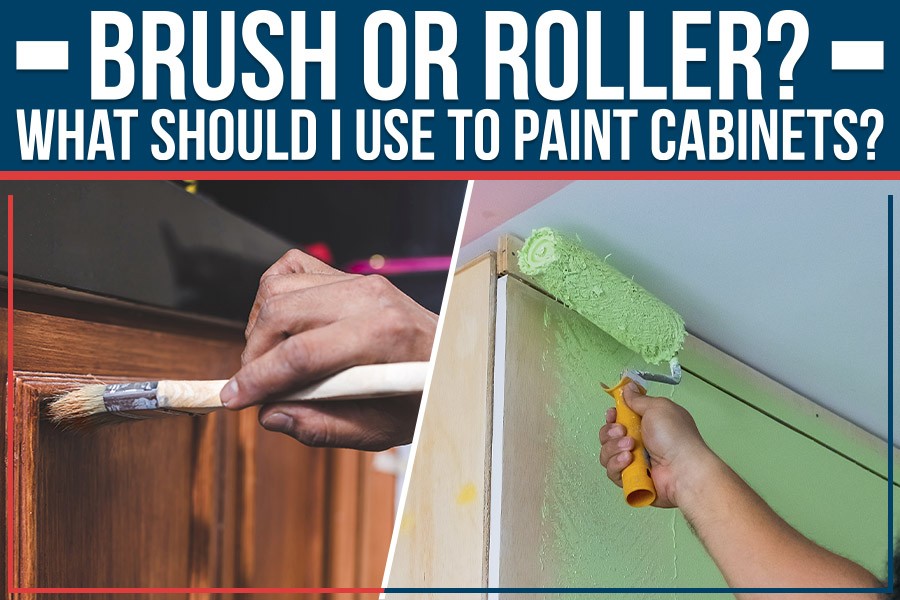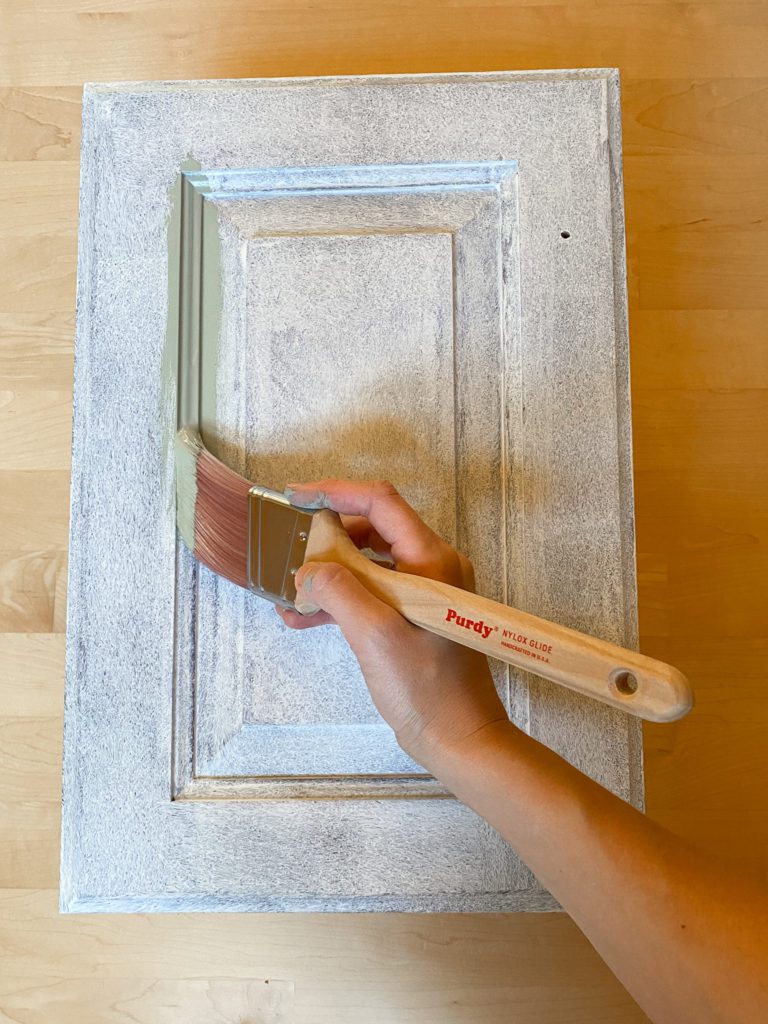The best roller for painting kitchen cabinets is a high-density foam roller. It provides a smooth, even finish.
Painting kitchen cabinets can transform your kitchen’s look. Choosing the right roller is crucial for a professional finish. High-density foam rollers are ideal because they minimize brush strokes and ensure an even coat. They are perfect for flat surfaces like cabinet doors and drawers.
Unlike traditional rollers, foam rollers absorb less paint, preventing drips and creating a sleek appearance. With the right roller, your cabinets will look fresh and updated. Always ensure your roller is clean and in good condition before starting. This small investment can make a big difference in your kitchen renovation project.
Table of Contents
ToggleChoosing The Right Roller
Selecting the best roller for painting kitchen cabinets can be tricky. The right roller ensures a smooth, professional finish. Let’s dive into the crucial factors for choosing the perfect roller for your project.
Material Considerations
The material of the roller affects the paint finish. Different materials suit different paints and surfaces. For kitchen cabinets, foam rollers are often the best. They provide a smooth, even finish. Microfiber rollers are another option. They hold more paint and reduce splatter.
Below is a table summarizing the materials and their benefits:
| Material | Benefits |
|---|---|
| Foam | Smooth finish, minimal texture |
| Microfiber | Holds more paint, reduces splatter |
| Woven | Durable, suitable for rough surfaces |
Size And Shape
The size and shape of the roller also matter. For kitchen cabinets, small rollers are ideal. They fit into tight spaces and provide precision. Typically, a 4-inch roller is perfect for cabinets.
Consider the shape of the roller too. Rounded edges help avoid roller lines. This ensures a smoother finish.
Here are some recommendations for size and shape:
- 4-inch roller for tight spaces and precision
- Rounded edges to avoid roller lines

Credit: www.jennasuedesign.com
Foam Rollers
Painting kitchen cabinets can be a daunting task. Choosing the right roller is crucial for a smooth finish. One popular option among DIY enthusiasts is the foam roller. Foam rollers offer unique benefits and are ideal for specific applications in cabinet painting.
Benefits
Foam rollers provide an array of advantages that make them a preferred choice:
- Ultra-smooth finish: Foam rollers create a smooth, even coat of paint.
- Minimal texture: They leave little to no texture, ideal for cabinets.
- Quick application: Foam rollers cover surfaces quickly and efficiently.
- Easy cleanup: Foam materials are easy to clean after use.
Foam rollers are lightweight and easy to handle. This makes them perfect for detailed work on cabinets. They absorb paint well, reducing drips and splatters. The result is a clean, professional-looking finish.
Ideal Applications
Foam rollers excel in several specific applications:
| Application | Reason |
|---|---|
| Cabinet doors | Provides a smooth, even coat without brush marks. |
| Cabinet frames | Reaches small, intricate areas with ease. |
| Trim and edges | Ensures clean lines and precise coverage. |
Foam rollers are ideal for both latex and oil-based paints. They perform well on wood, laminate, and MDF surfaces. They are especially useful for achieving a professional look on kitchen cabinets. Their ability to deliver a smooth finish makes them a top choice for home improvement projects.
For painting kitchen cabinets, foam rollers are hard to beat. Their benefits and ideal applications make them an excellent tool for achieving a high-quality finish.
Microfiber Rollers
Microfiber rollers are a popular choice for painting kitchen cabinets. They are known for their smooth finish and ease of use. These rollers are made from synthetic fibers that help to evenly distribute paint. Whether you are a professional or a DIY enthusiast, microfiber rollers can make your kitchen cabinets look professionally done.
Pros And Cons
| Pros | Cons |
|---|---|
|
|
Best Uses
Microfiber rollers are excellent for painting kitchen cabinets. Their ability to provide an even coat makes them ideal for detailed work. Here are some of the best uses:
- Cabinet Doors: Achieve a smooth, professional look.
- Drawer Fronts: Evenly coat small surfaces.
- Cabinet Frames: Perfect for edges and corners.
These rollers are also great for other furniture projects. Use them for dressers, tables, and shelves. Their versatility makes them a valuable tool in any painter’s kit.
High-density Foam Rollers
Choosing the right roller for painting kitchen cabinets is crucial. One popular choice is the high-density foam roller. This type of roller ensures smooth and even application. It helps you achieve professional-looking results with ease.
Advantages
High-density foam rollers offer many benefits:
- Even Coverage: These rollers provide a consistent layer of paint.
- Minimal Texture: They leave a smooth finish without brush marks.
- Easy to Use: Lightweight and easy to handle for precise work.
- Cost-Effective: Affordable yet delivers professional results.
Suitability For Cabinets
High-density foam rollers are perfect for painting kitchen cabinets due to their unique features.
| Feature | Benefit |
|---|---|
| Smooth Finish | Ideal for cabinets’ flat surfaces. |
| High Absorbency | Holds more paint, reducing drips. |
| Precision | Great for edges and corners. |
| Durability | Withstands multiple uses without degrading. |
Using a high-density foam roller ensures a smooth finish on your cabinets. The roller’s absorbency holds more paint, reducing streaks and drips. Its precision helps you paint edges and corners with ease. Durable and reliable, it withstands multiple uses.
Textured Rollers
Painting kitchen cabinets requires the right tools. One tool to consider is the textured roller. Textured rollers offer a unique way to add depth and character to your cabinets. They can create various finishes that standard rollers can’t achieve.
When To Use
Choose a textured roller when you want a distinct look. They work well for hiding minor imperfections on cabinet surfaces. These rollers are ideal for older cabinets needing a fresh, unique look.
For a rustic or vintage feel, a textured roller is perfect. It adds a charming, aged appearance to your kitchen cabinets. Use it when you want to make a bold statement in your kitchen design.
Achieving Unique Finishes
Textured rollers come in different patterns. Each pattern provides a different finish. Here are some popular options:
- Foam Rollers: Create a soft, stippled effect.
- Rag Rollers: Produce a cloth-like texture.
- Faux Finish Rollers: Mimic the look of marble or wood grain.
Using a textured roller, you can achieve a one-of-a-kind finish. Apply a base coat, then roll over with a textured roller. Use different colors for added depth and contrast.
Here is a simple table to help you choose the right textured roller:
| Roller Type | Finish |
|---|---|
| Foam Roller | Soft Stippled Effect |
| Rag Roller | Cloth-like Texture |
| Faux Finish Roller | Marble or Wood Grain |
Experiment with different textures. Find the one that best fits your kitchen style. A textured roller can transform your kitchen cabinets, giving them a unique and appealing finish.

Credit: spraytexpainting.com
Top Expert Picks
Choosing the right roller can make painting kitchen cabinets easier. Experts recommend rollers that offer smooth finishes and durability. Below, find top picks based on professional recommendations and popular brands.
Professional Recommendations
Experts suggest using foam rollers for a smooth finish. Foam rollers help avoid brush strokes. They also reduce paint waste.
Another choice is microfiber rollers. Microfiber rollers hold more paint. This means fewer trips to the paint tray.
| Roller Type | Benefits |
|---|---|
| Foam Rollers | Leaves smooth finish, avoids brush marks |
| Microfiber Rollers | Holds more paint, reduces trips to paint tray |
Popular Brands
Many brands offer excellent rollers for kitchen cabinets. Here are some popular choices:
- Wooster: Known for durable and high-quality rollers.
- Purdy: Offers smooth application and easy cleanup.
- Whizz: Ideal for small areas and detailed work.
- Wooster: Durable, high-quality rollers.
- Purdy: Smooth application, easy cleanup.
- Whizz: Best for small areas, detailed work.
Tips For Smooth Application
Achieving a flawless finish on your kitchen cabinets requires the right tools and techniques. A high-quality roller can make a significant difference. Follow these tips to ensure a smooth, professional-looking result.
Preparation Steps
- Clean the Surface: Wipe down cabinets with a degreaser to remove grime.
- Sand Lightly: Use fine-grit sandpaper to create a smooth surface.
- Remove Dust: Use a tack cloth to clear away sanding dust.
- Prime the Cabinets: Apply a coat of primer to ensure better paint adhesion.
Techniques For Even Coating
Using the right techniques ensures an even coat of paint on your cabinets.
- Load the Roller Properly: Dip the roller in paint and roll off excess on a tray.
- Apply with Light Pressure: Roll the paint onto the cabinet with gentle pressure.
- Use Short, Even Strokes: Roll in small sections, overlapping each stroke slightly.
- Maintain a Wet Edge: Always keep a wet edge to avoid lap marks.
- Allow Drying Time: Let the paint dry completely before applying a second coat.
For best results, consider using a foam roller. Foam rollers provide smooth application without leaving marks.
Maintenance And Care
Proper maintenance and care of your painting tools ensure longevity and better results. When you use the best roller for painting kitchen cabinets, taking care of it is essential. This section covers everything you need to know about keeping your rollers in top shape.
Cleaning Rollers
Cleaning your roller after each use keeps it ready for future projects. Follow these steps to clean your roller effectively:
- Remove excess paint: Use a putty knife to scrape off the paint.
- Rinse with water: If using water-based paint, rinse the roller under warm water.
- Use a cleaner: For oil-based paints, use mineral spirits or a paint thinner.
- Wash with soap: Apply mild soap and gently rub the roller.
- Rinse thoroughly: Make sure all soap and paint are removed.
- Dry properly: Shake off excess water and let it air dry.
Storing For Future Use
Storing your roller correctly is key to its durability. Here are some tips:
- Wrap in plastic: Wrap the roller in plastic wrap or a plastic bag.
- Use a roller cover: Place the roller in a cover to protect it from dust.
- Store vertically: Keep the roller standing upright to maintain its shape.
- Avoid extreme temperatures: Store in a cool, dry place away from heat.
By following these maintenance and care tips, your roller will stay in excellent condition, ready for your next kitchen cabinet painting project.

Credit: www.thehandcraftedhaven.com
Frequently Asked Questions
What Type Of Roller Is Best For Cabinets?
A high-density foam roller provides a smooth finish on kitchen cabinets.
Can I Use A Foam Roller On Cabinets?
Yes, foam rollers are excellent for achieving a smooth, even coat on cabinets.
What Size Roller Is Best For Cabinets?
A 4-inch roller is ideal for painting kitchen cabinets.
Do I Need A Special Roller For Cabinets?
Yes, use a high-density foam roller for the best results on cabinets.
How To Avoid Roller Marks On Cabinets?
Use a high-density foam roller and apply thin, even coats to avoid marks.
Is A Microfiber Roller Good For Cabinets?
Yes, microfiber rollers can provide a smooth finish but foam rollers are usually preferred.
Can I Use A Regular Roller On Cabinets?
A regular roller may leave texture; a foam roller is better for a smooth finish.
How Many Coats Needed On Cabinets?
Typically, two to three coats are needed for a durable finish on kitchen cabinets.
What Roller Nap Is Best For Cabinets?
A 1/4-inch nap roller is ideal for a smooth cabinet finish.
Should I Sand Between Coats On Cabinets?
Yes, lightly sanding between coats ensures a smooth, professional-looking finish on cabinets.
Conclusion
Choosing the best roller for painting kitchen cabinets can make a huge difference. Quality rollers ensure a smooth, professional finish. Remember to select one that suits your paint type and project size. With the right roller, your kitchen cabinets will look stunning and refreshed, adding beauty to your home.
Happy painting!

